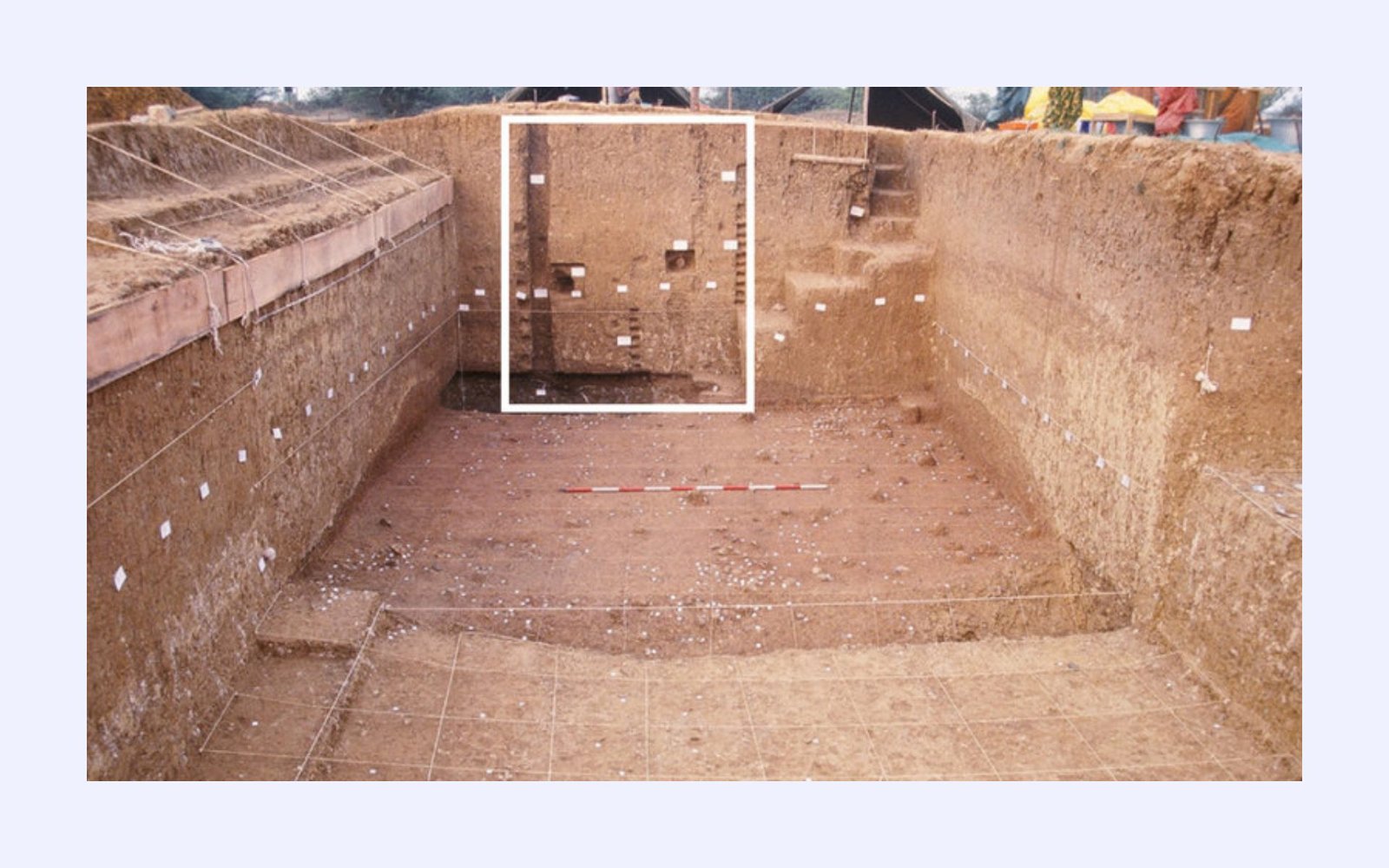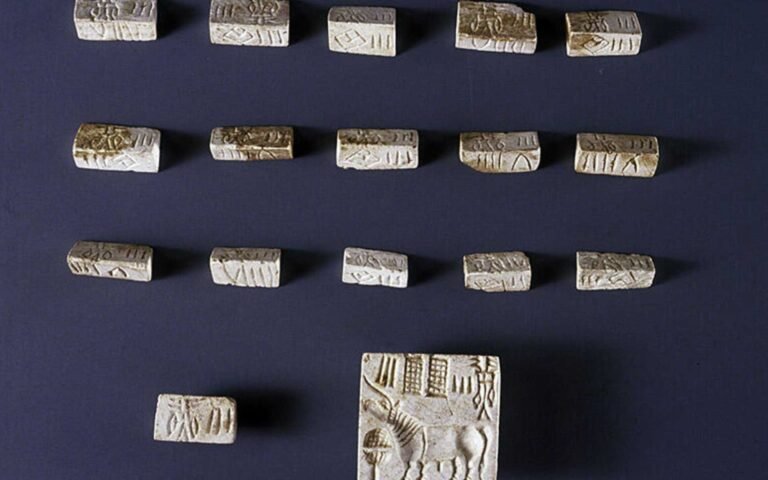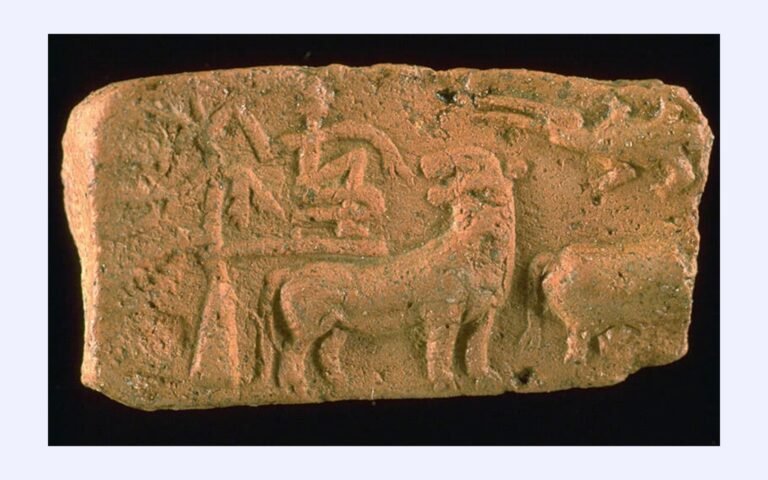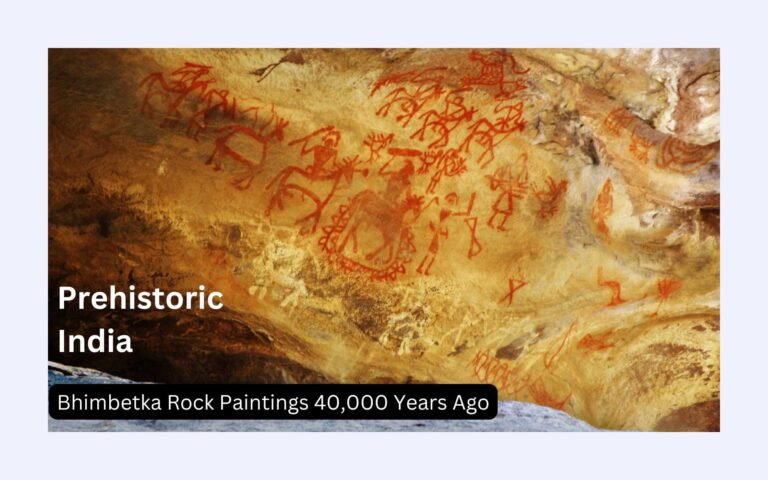Attirampakkam was one of India’s oldest prehistoric sites, with evidence of human activity from 1.5 million years ago, showcasing Acheulean tools and cultural evolution.
Location
- Attirampakkam is situated in the Kortallayar River basin in Tamil Nadu, South India.
Significance
- This site is one of the oldest known prehistoric sites in India, providing critical insights into the early human presence in South Asia.
Key Findings
Age and Duration
Excavations have revealed that human activity at Attirampakkam dates back to approximately 1.5 million years ago, with evidence of continuous human occupation spanning over a million years. This makes Attirampakkam one of the oldest Acheulean sites outside of Africa.
Acheulean Tools
The primary archaeological finds are Acheulean hand-axes, cleavers, and other bifacial tools. These tools are meticulously crafted, showing a high level of skill in stone knapping.
The presence of these tools suggests that early humans at Attirampakkam were part of the broader Acheulean cultural tradition, which was characterized by its distinctive stone tool technology.

Technological Transition
Attirampakkam also provides evidence for one of the earliest transitions from Acheulean to Middle Paleolithic technology in Asia. This transition is marked by the shift from large bifacial tools to smaller, more sophisticated tools, including those made with the Levallois technique, around 385,000 years ago.
Cultural Context
The artifacts indicate that these early humans were adept at adapting their tools for different activities, from butchering animals to possibly woodworking or digging.
The site’s location near a river suggests that early inhabitants exploited riverine resources, indicating an understanding of environmental exploitation.
Human Evolution
The findings at Attirampakkam contribute to the debate on human evolution, particularly regarding the dispersal of hominins from Africa. The site’s tools are associated with early Homo species, possibly Homo erectus or an early form of Homo sapiens.
Excavation History
The detailed excavation history of Attirampakkam reflects a journey from early recognition to becoming a key site in understanding early human history in South Asia, with each phase of work adding layers of knowledge to our understanding of the past.
Early Discoveries (Early 20th Century):
- The initial interest in Attirampakkam was sparked in the early 20th century when British archaeologist Robert Bruce Foote, often regarded as the father of Indian prehistory, conducted surveys in South India. Foote, known for discovering India’s first Paleolithic tool in 1863, likely noted the potential significance of Attirampakkam but did not conduct extensive excavations there.
Pre-Independence Era:
- Not much systematic archaeological work was conducted at Attirampakkam during this period, although it was recognized as part of the broader prehistoric landscape of South India.
Post-Independence (1950s – 1980s):
- After India’s independence, the Archaeological Survey of India (ASI) and other institutions began to take more interest in the prehistoric archaeology of the country.
- 1960s: K.V. Soundara Rajan, an archaeologist with ASI, conducted exploratory excavations at several sites in Tamil Nadu, including Attirampakkam, identifying the presence of Acheulean artifacts but not with the depth of later excavations.
Modern Excavations (1980s – Present):
1980s – 1990s: More systematic work began in this period, with archaeologists like V.N. Misra focusing on the prehistoric cultures of India. However, Attirampakkam did not receive extensive attention until later.
2000s Onwards:
Shanti Pappu and Kumar Akhilesh from the Sharma Centre for Heritage Education (SCHE) in Chennai took up the challenge of exploring Attirampakkam in-depth. Their work has been pivotal in establishing the site’s chronology and significance:
2004: Initial surveys and small-scale excavations confirmed the presence of Acheulean tools, hinting at the site’s potential antiquity.
2008: Significant excavations began, with findings suggesting that the site was much older than previously thought.
2011: The discovery of a hand-axe under layers dated to around 1.5 million years ago through cosmogenic dating was a landmark, pushing back the known human history in India.
2010s – Present:
Collaboration with international researchers, including those from the Indian Institute of Science (IISc), has brought advanced dating techniques like luminescence dating and cosmogenic nuclide dating into play, providing more precise ages for the artifacts and layers at Attirampakkam.
2018: A study published in the journal Nature highlighted the transition from Acheulean to Middle Paleolithic at Attirampakkam around 385,000 years ago, one of the earliest known transitions worldwide.
Techniques and Findings:
- Excavation Techniques: Modern methods included trench digging, meticulous recording of stratigraphy, and the use of geophysical surveys.
- Dating Methods: Beyond traditional stratigraphy, researchers used:
- Cosmogenic Nuclide Dating: For the oldest layers, estimate when the rocks were last exposed to cosmic rays.
- Luminescence Dating: To determine when sediment was last exposed to sunlight, useful for the younger layers.
- Artifacts: The excavations have yielded a rich assemblage of stone tools, predominantly Acheulean, but also showing the transition to more advanced tool-making techniques. This includes hand-axes, cleavers, and, later, smaller tools indicative of the Middle Paleolithic.
Current and Future Work:
- Excavations continue, with ongoing research focusing on:
- Refining the chronology of human occupation.
- Understanding the paleoenvironmental context through sediment analysis and faunal remains.
- Exploring the site’s potential to yield evidence on human behavior, adaptation, and cultural evolution.
Implications
1. Revision of Human Migration Patterns:
The ancient age of the tools found at Attirampakkam, dating back to approximately 1.5 million years, suggests that humans (or their hominin ancestors) migrated out of Africa much earlier than previously thought. This challenges existing models of human dispersal, which had primarily focused on later migrations.
2. Technological Evolution:
The site provides one of the earliest documented transitions from the Acheulean to Middle Paleolithic technology in Asia, roughly around 385,000 years ago. This indicates that technological innovations were not confined to Africa or Europe but were also occurring in Asia, highlighting regional contributions to human technological evolution.
3. Cultural and Cognitive Development:
The complexity and craftsmanship of the tools suggest advanced cognitive abilities among early hominins in India. This implies a level of cultural sophistication and the ability to adapt tools to specific needs or environments, which enriches our understanding of early human culture.
4. Environmental Adaptation:
The site’s location near the Kortallayar River indicates that early humans in India were adept at exploiting riverine environments, possibly for both resources and as a corridor for migration. This has implications for understanding how environmental conditions influence human settlement and adaptation patterns.
5. Regional Significance:
Attirampakkam elevates the status of South Asia in discussions of human evolution and archaeology. It shows that India was not just a passive recipient of cultural influences but an active center of human activity and innovation during the Paleolithic.
6. Dating and Chronology in Archaeology:
The application of advanced dating techniques like cosmogenic nuclide dating and luminescence dating at Attirampakkam has set new standards for dating Paleolithic sites in Asia, allowing for more precise understanding of when and how long humans have inhabited certain areas.
7. Global Human Evolution Narrative:
The findings contribute to a more nuanced global narrative of human evolution, emphasizing the role of Asia, particularly South Asia, in the story of Homo sapiens’ evolution. It supports the idea of multiple dispersal events from Africa, with different groups potentially contributing to the genetic and cultural diversity seen today.
Ongoing Research
Excavations and research at Attirampakkam continue, with efforts focused on understanding the full chronological, cultural, and environmental context of the site. This includes studying the paleoenvironment to understand how climate and landscape changes might have influenced human behavior and adaptation.




